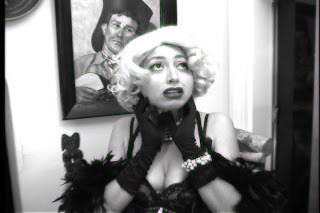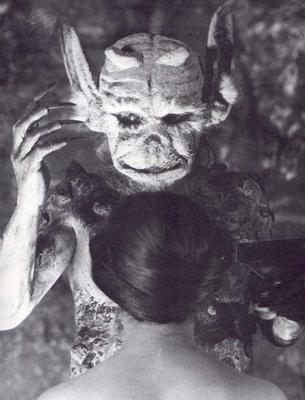Lobby card to Edgar G. Ulmer’s 1946 adaptation of The Strange Woman (1941), about a beautiful woman (Hedy Lamarr) who destroys the lives of the men around her.
Building my last post I came across a curious book called The Strange Woman, reviewed and analyzed by Gershon Legman:
In [Neurotica number 4 Gershon Legman] published “Institutionalized Lynch: The anatomy of a murder-mystery.” In three separate columns, he listed the instances of “Sadism,” “Sadism and Sex,” and “Sex,” as they occurred in the action of a best-selling novel, The Strange Woman, (1941) by Ben Ames Williams. Legman worked on the principle that, as the law tolerated no general description of sex, the result was the “mundane substitute for sex”–i.e., sadism:
Murder having replaced sex in the popular arts, the glorification of one requires the degradation of the other … so that we are faced in our culture by the insurmountable schizophrenic contradiction that sex, which is legal in fact, is a crime on paper, while murder–a crime, in fact–is, on paper, the best-seller of all time.
Taking a fifty-page sample of The Strange Woman, Legman found ten examples of “Sadism” (“Woman listens ‘with pent breath’ to details of whipping a man … Did he bleed,” etc.), ten examples of “Sadism and Sex” (“her knotted fists beat at him in passionate ecstasies”), and a single evocation of “Sex,” with that being a “nebulous description of a coitus.” — source
P. S. Ben Ames Williams’s The Strange Woman is also mentioned in this PDF file, a transcript of the book The Mask of Sanity (1941) by Hervey Cleckley which extensively cites Mario Praz’s Romantic Agony in the chapter on genius and the psychopath. The relationship between creativity and ‘perversion’ on the one hand and the representation of psychopathology and paraphilia is of interest to me .
I quote:
Anyone concerned at all with psychiatry is likely to find in Jenny Hagar Poster Evered of The Strange Woman (Ben Ames Williams) detail and concreteness familiar in the direct study of patients but hard to put into medical histories. In that she does not respect the rights of others and particularly in that she reacts in anything but a normal way in the deepest personal relations, Jenny might be proclaimed a psychopath whose deviation is extraordinarily complete. Sharply distinguishing points emerge when we consider the persistent purposiveness, the strong and sustained malice with which this woman works to destroy all happiness for children, husbands, and paramours. A conscious brutality prevails. Destructive impulses are directed consistently by open hate.
Related to my searches on psychopaths is this nice write-up by Gordon Banks: Don Juan as Psychopath. See also one of my earlier posts on Don Juan.
From the introduction:
“What kind of man is this Don Juan Tenorio?”, asks Leo Weinstein in his monograph on the Don Juan legend, “Why does he bend all his efforts to deceive women?. . . To the modern, Freud-oriented reader, Tirso’s hero is likely to remain enigmatic. . . .” Rather than permit the thought that the enigma is due to the lack of psychological depth and subtlety in the creation of a 17th century priest, I intend to demonstrate that the opposite is the case, and that nowhere earlier in literature is a description of the psychopath found more sharply delineated than in this brilliant play of a Spanish friar named Gabriel Téllez, who wrote El Burlador de Sevilla y Convidado de Piedra, under the pseudonym Tirso de Molina in the first part of the seventeenth century.
While it was not until the nineteenth century that physicians began to elucidate the nature of that disturbing category of human beings that we now call psychopaths, history and literature show that they have always been with us. Although psychopathic behavior was displayed by literary characters as early as Ulysses of The Iliad, (that same psychopathic Ulysses was later revisited by Dante in Inferno Canto 26), this Burlador (trickster), Don Juan Tenorio, has come to occupy a place in western literature alongside the other great legends of Don Quixote, Faust, and Hamlet. Later, under the successive ministrations of Molière, Hoffmann, Mozart, Da Ponte (Mozart’s librettist), and Byron, the character of Don Juan lost much of the vicious edge given him by his creator, and was gradually transmuted into the character we identify with the name of Don Juan today: the profligate lover and often, a romantic seeker for ideal womanhood.
Lastly, by the same Gordon Banks: Kubrick’s Psychopaths.
To the creator of films as well as other forms of literature, the dark side of human nature has often proved more rich and interesting than the bright. Films and books on the lives of saints have not been as popular as murder mysteries and works of horror. While we may have no desire to experience them in our own lives, terrible deeds and evil people exert their perverse attraction on our psyches. We who consider ourselves moral and upright are often fascinated by the behavior of the pitiless, merciless, and guiltless psychopath. Like a magnificent black panther: powerful, dangerous, and alien, the psychopathic character can have a dark, perfect beauty that simultaneously attracts and repels us. We will explore the use of such characters in the films of Stanley Kubrick, the 20th century film auteur as it relates to his view of the nature of both individuals and human institutions. But first, we will review the clinical view of psychopathy as assembled by students of brain and behavior over the centuries.









